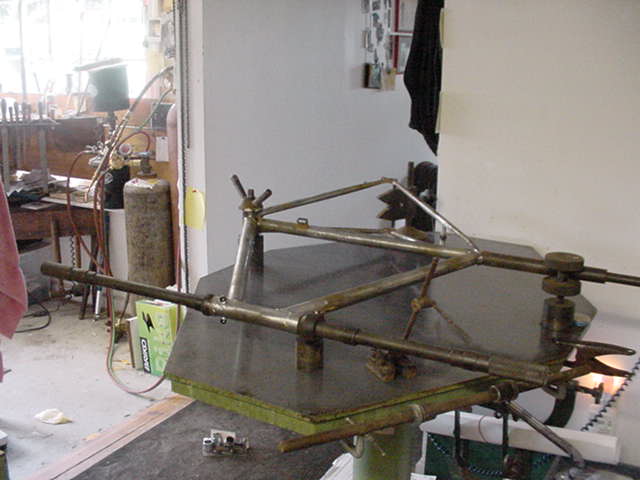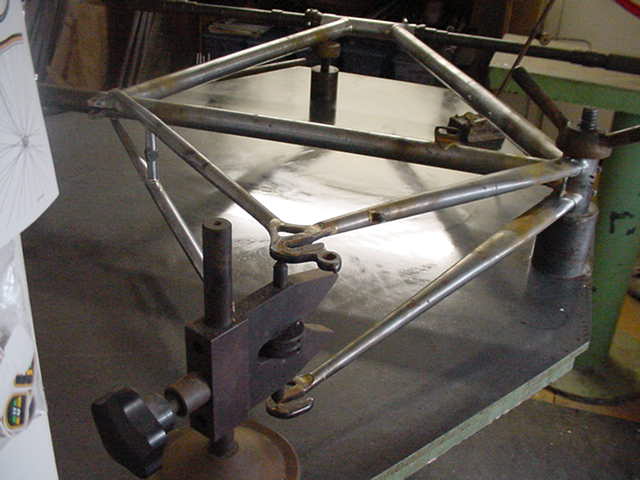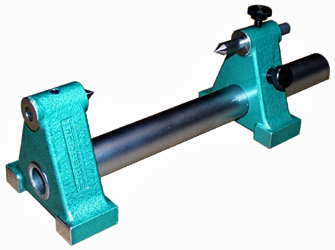Hi Tristan,
Good questions! I'll tackle the DT question first. Ultimately, I want the center of the head tube, the center of the seat tube, and the center of the distance between the dropouts to be in equal plane above the plate. Measuring the DT deflection gives me a quick visual of how the front triangle is shaping up, but I ultimately check the HT centerline using the cones and rod.
The ODs of the tubes are generally pretty consistent along any given tube's length. While a dummy seatpost may be a better theoretical way to check the seat tube, it does present some practical challenges. I, for one, would need a much larger plate for these bigger bikes. You would not want to measure only along an 8 or 10 cm test bar. Measuring along a long tube magnifies the error. But then you run into the problem of having a long test bar hanging off the end of the tube, leading to deflection of the tube. Yes, you could have a stand-off under the tube, but that just becomes a fulcrum point in my mind. I've found using the tubes themselves to be precise and accurate way to check, and is an accepted practice in the trade.
Alignment itself is something that few people will openly discuss, probably because there isn't really any way to test how it influences a bike and the way it handles. And since there aren't any real data and correlations, I think it gets swept under the rug. It's this voodoo type of thing. I think many of us who have tables have measured production frames that were miles away from what the handmade bike world strives for, yet those owners don't complain about pull or shimmy. Maybe they don't know better. I don't know. Maybe we could build some frames that are an eighth inch out and build it up and see. Who has time for that though? But its my belief that most handmade bike builders are working well within an order of magnitude (or two maybe? who knows?) of what could be felt by the rider. That's not to say there aren't handmade bikes out there that don't pull or shimmy or act wonky (technical term), but can we simply isolate that wonkiness to the frame and/or fork? There are lots of other parts hanging off the frame that could influence that.
Anyway, I think it's a good topic for discussion. Maybe I'll start a thread. That way, we can all agree to disagree.


 Likes:
Likes: 



 Reply With Quote
Reply With Quote







Bookmarks